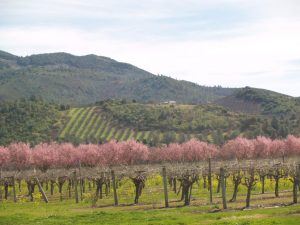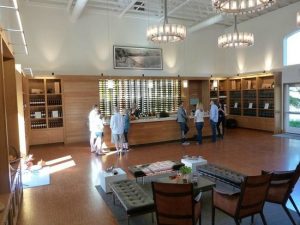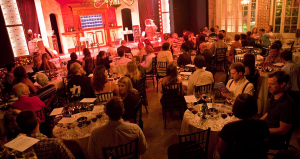In some areas of Wine Country, you go tasting and you know not to expect much. In other places, you anticipate sipping some fine wines, but the discovery of which ones will appeal to you awaits the tasting. And then there are occasions, not many, when you know in advance that you will soon be tasting something superb. You might have an appointment at one of the premier cru chateaux in Bordeaux, say Mouton Rothschild. Or perhaps it’s Opus One in the Napa Valley or Biondi Santi, the home of Brunello in Tuscany. The top of the top.
If you love wine, these are very special experiences, akin to visiting the Louvre or the Grand Canyon. These wines are known to be the finest of their type and as you approach one of these special wineries, your sense of anticipation rises to a crescendo. You know you are about to have a very special wine tasting. This is a life experience in itself. With all that, don’t let your emotions carry you away. This is still just wine, a pleasing part of your life for sure but not, for most of us, central to it. Here are some tips for making the most of a very special occasion without being overwhelmed by it.
Chateau d’Yquem. Photo courtesy of LVMH.
- Don’t complain. The tasting is probably expensive. There may be a wait for a tour group to arrive. Outside the United States, you may have some difficulty understanding your guide or server. You probably won’t get a chance to taste the 1982 vintage. Put all that out of your mind and recognize that even the greatest châteaux are run by wine people, not corporate efficiency experts. Don’t spoil your visit thinking about what it’s not. Make the most of what it is.
- Savor the entire experience. It’s not just about tasting the wine. Often the tasting comes with a tour but if not, make arrangements to have one. Learning how the best make wine gives you some background for the lesser but still very good wineries you will visit in the future. There is something about seeing the Rothschilds’ cellars or 100-year old casks that are still in use that is simply thrilling. Soak up the furnishings, the art work, the views of top-tier vineyards. If you enjoy wine tasting as much as we do, this will be the summa. Enjoy it to the fullest.
- In what seems like contradictory advice, remember that it’s just wine. A press is a press, a barrel is a barrel and bottle is a bottle. The makers of plonk do it the same way as Robert Mondavi did, just with less skill, lesser materials and poorer grapes. It has been our experience that it is a pleasure to see someone do something as well as it can be done, regardless of what it is. But keep it in context. What you will see in these great wineries is the making of a fine beverage, not the cure for diseases or a flight to the moon. By keeping that perspective, you will enjoy this experience without diminishing the pleasure of other wine tasting adventures yet to come.
- Appreciate the wine when you taste it. You won’t get a lot in your glass and you may not be able to afford to taste some of these wines again, so sip slowly. Absorb the aromas. Think about the flavors opening up in your mouth. Think of where you are and look around to print that moment in your memory. Try to remember the taste, as hard as that may be. We have long said that it’s your mouth and your taste buds, so there is no one to tell you what’s good and what’s not. But honestly, if you don’t enjoy these wines, it’s probably you, not the wine.








